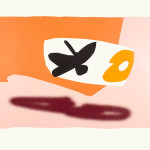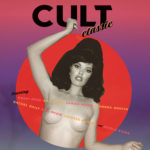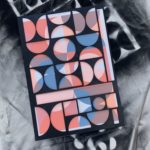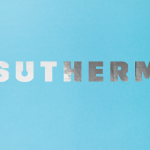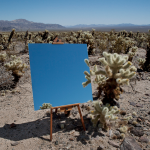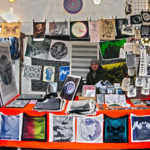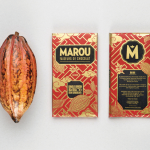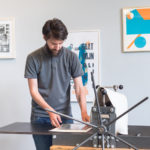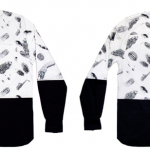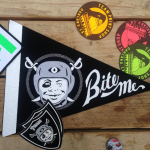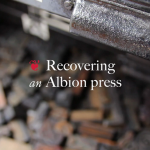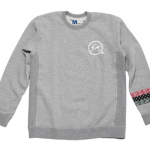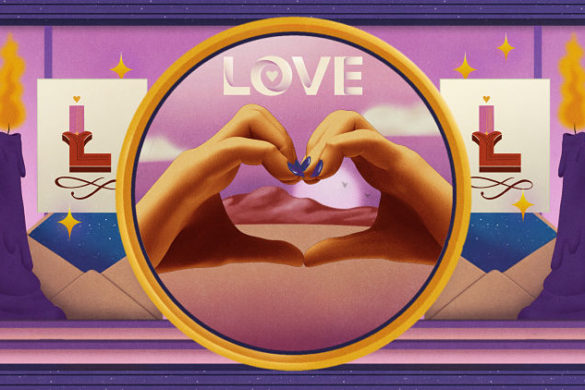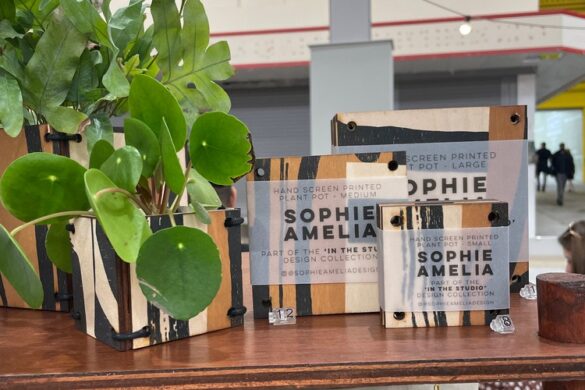Bongout is a multidisciplinary creative duo based in Berlin. I have truly fallen in love with their prints and the process in which they work. Christian and Anna have kindly taken some time to answer some questions for us. (Click the plus to read more)
All of the selected work above is by Re:Surgo! which is Bongoût’s creative twin. It comprises the graphic design studio and the silkscreen atelier in which Anna Hellsgård & Christian Gfeller are creating artist books, prints and design works. Bongoût is the name of the whole structure (web shop, shop, offset publication…).
Are you from a family of creatives?
Christian: Not really… but my grandfather used to build little wood scenes like The fox & the raven” fable, Swiss chalet or African tribes eating a Christian missionary. He would give them to the Red Cross for them to rise money.
Anna: My sister is a filmmaker.
Did anyone have an impact on you and your career choice?
Christian: When I was a teenager, I had an art teacher, Isabelle, who was Antoine Bernhart’s girlfriend. She showed me a lot of artists silkscreen books and punk graphic zines. I instantly knew “this is what I want to do !”.
Anna:In terms of creativity, we try to keep our influences as open as possible. From contemporary art to underground comics, experimental films or outsider art. In the field of graphic design, we especially like Polish and Cuban posters from the 70’s – graphic designers such as like Roman Cieslewicz, Henryk Tomaszewski…
Christian: We also really like the young contemporary art scene, artists like Thomas Zipp, Sterling Ruby, Dan Colen, Urs Fisher, Andreas Hofer or Christopher Wool, to name but a few.
If you were not a print artist, where do you think you would be now?
Anna: I would be shoemaker, living in the woods.
Christian: I don’t really think in terms of boxes. We don’t especially identify as ‘print artists’. We are print artists, but also graphic designers, photographers, publishers, entrepreneurs or painters. Great ideas only happen when you think creatively across different media.
Did you have a specific goal to achieve in your career? Have you achieved it yet?
Being independent and able to decide to do whatever project we feel like is a crucial freedom. I guess it’s the most important for us. We would not want to be artists forced to produce for one or several gallerists in order to feed the market. We’ve seen that happen to people and it’s pretty sad. Our freedom is in our flexibility.
Can you take us through the evolution of your work and style.
Christian: I started pretty punk. My first silkscreen atelier was in a huge alternative warehouse project that was hosting rehearsal spaces, recording studios and event spaces. I was publishing silkscreen hand-printed artist books in a very DIY matter. Some of my friends started a small garage punk & noise label, so I would design and print the record covers. Meanwhile we organised concerts, exhibitions, raves and parties. I was in charge of doing the design and print to advertise the events. When I met Anna in 2001, we started collaborating and eventually our work became more structured and sharp.
What is it about the process of screen print that you love? Tell us how you developed this love.
Christian: Well, each project has a different concept and we like to set up different rules. For some of the books we recycled film that was destined for the bin. We draw directly on the film with gouache or spray paint, use tape or stamps or whatever we can think of. I have even used some of my hair and glued it onto the film. For some colour layers, we partially remove the emulsion from the previous print with the high pressure water cleaner and then use it as the base for the next print.
Anna: For the improvised books, we print on leftover printed offset paper we collected at an offset print shop. Making these books is very physical work, and often we are in a trance-like creative state. We do use computers though. For example, we wouldn’t do any colour selection by hand if we could obtain the same result with a computer. We are not interested in crafty, laborious challenges for their own sake, but for some works it is crucial to do the colour separation by hand. Sharpie marks and X-acto knife traces are not simulated however, they are always real traces. Computers wouldn’t be able to render that hand-drawn feeling — they are just another tool. I believe you shouldn’t let the tool direct and dictate the process and results of your works. It is also very important for us to combine different media: hand-drawn fonts, photocopied drawings, patterns, stamps, etc.
Tell us about your workspace. Are you clean and tidy or do you like a creative mess?
It’s a tidy mess. Growing older we need a more ordered and a clean space to be creative, but it is still a working space.
Is this your first studio / shop space? How have you developed the area you work in?
The first Bongoût studio was in a warehouse in Kehl (Germany), across the Rhine. I was living in Strasbourg-France back then. On the other side of the border. When I met Anna we re-located in Bordeaux for a year and a half. We quickly moved to Berlin. In Berlin we’ve had three different locations, and we’ve been in the space on Torstrasse since early 2008.
How would you describe your style?
It’s not easy for us to describe, but I would we start off from a graphic thinking, and push the figurative elements to the edge of abstraction.
Have you done much collaborative work with other artists? Tell us about this process.
We have very often worked with other artists – in fact, collaborations are an essential part of our practice and inspiration. Each project defines a new set of rules.
What are you working on at the moment?
Christian: We just finished Given, a massive collective silkscreen book. It’s 30 x 40 cm, 72 pages, and comes in a cardboard box. We asked 35 artists (Seripop, Tara Mc Pherson, Pakito Bolino, Gregory Jacobsen, Manuel Ocampo….) to submit images and we printed the whole project this summer. We used 93 screens. Beside this, we just released 3 little silkscreen books (Helge Reumann, Leto & Franziska Schaum), are are currently working on two big offset monographs: a painting book by ATAK and a photo book with Natacha Merritt.
Anna : And we just started a 7″ series in collaboration with Le Petit Mignon/Staalplaat (Berlin-based record shop and noise label). It will be a series of 7″ vinyls for which we do the artwork. For the first record, by Norwegian band MoHa!, we did a 12 -page silkscreen experimental booklet that comes with the record. We are now working on the second one, a 7″ compilation of 41 bands, with each song being 15 seconds at most. We are excited to continue working on that series!
Screen printing is having a massive resurgence since the 60’s, where do you see screen print in the next three years?
In the past five years there has been a huge resurgence of interest in hand-made things: things that cannot be duplicated or digitalised. When I started in 1995, you could really count on one hand the number of people doing hand-printed silkscreen books, especially in Europe. In the US there where just a few artist following the 60’s psychedelic rock poster path. Nowadays, I can’t even follow who is doing what. But in time, only the ones that are persevering and doing good work will stick around.

